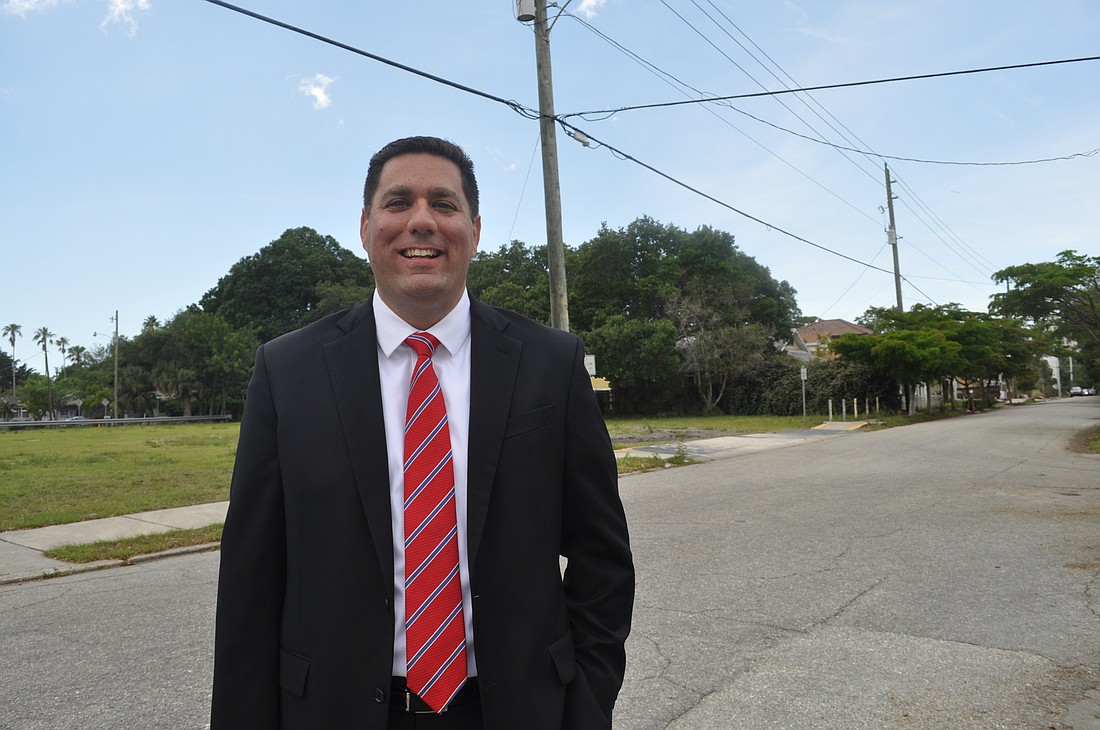- December 13, 2025
-
-
Loading

Loading

If a new 17-unit townhome project moves ahead in Laurel Park, the developer will pay $250,000 into the city’s affordable housing fund.
Although that money would aid the ongoing quest for affordable housing in Sarasota, a cash payout wasn’t the city’s first goal. As officials press harder to create a more diverse housing stock, procedural questions remain about how private affordable units can be created and managed.
When Oaktree Development agreed to purchase the land at 1938 Laurel St. last year, the site was only approved for 12 “attainable” residential units. As Oaktree sought to relax the regulations, the City Commission pushed for a compromise. City leaders had endorsed a scatter-site affordable housing policy, in which affordable units are dispersed throughout larger projects citywide. Perhaps just two townhomes could be sold at affordable rates, they said.
“You have regular units that are at market rates and two units under market rate. Who decides who gets those?” — Michael Infante
Last May, as Oaktree also worked on obtaining a comprehensive plan amendment to remove the site-specific requirements, commissioners keyed in on a potential snag. City regulations mandate that attainable housing units should be “functionally equivalent” to market-rate units. Depending on the interpretation of that phrase, the regulation could be a burden on developers, officials said.
Continued dialogue with the city revealed a greater degree of uncertainty about the creation of attainable units, according to Oaktree manager Michael Infanti. He said the city would prefer to see the developer build affordable housing, an option Oaktree was willing to consider until more questions on implementation arose.
“Who’s going to oversee that; how’s it going to work?” Infanti said. “You have regular units that are at market rates and two units under market rate. Who decides who gets those? Who’s going to win that lottery, and what’s going to prevent them from buying it on the first day and selling it at market rates?”
The city has acknowledged those issues. In January, the commission voted unanimously to approve the monetary contribution to the affordable housing fund, which currently holds $49,000. At that time, City Commissioner Susan Chapman expressed an interest in working to make sure future projects could move forward with attainable units built into the development.
“There’s no mechanism in place to maintain permanent affordability,” Chapman said. “Without some kind of mechanism, those units we might require would be flipped.”
“There’s no mechanism in place to maintain permanent affordability.” — Susan Chapman
Based on his conversations with officials, Infanti said he believes there’s a broader desire to create that mechanism. As it stands, though, the best option for the Laurel Park development is to offer money toward a future affordable housing effort.
“I think the City Commission would like to further explore how do make this possible,” Infanti said. “But there’s nothing in the code — there’s no way to do it right now without making it more uniform.”
Affordable housing may have complicated this residential project, but the nearby neighborhood association has praised the proposed development.
Oaktree Development held its second and final community workshop with the Laurel Park Neighborhood Association Wednesday, required because the project falls within the boundaries of the Laurel Park Overlay District.
Residents have praised the project because it focuses on housing — before, the land was zoned for 23,500 square feet of office space.
“We like residential on our borders,” said Laurel Park Neighborhood Association President Jude Levy.
Infanti said the relationship has been mutually beneficial.
“They’ve been really great to work with — not just in hearing what we have to say, but giving their thoughts and opinions as to what they think their community should look like,” Infanti said.
The project, now known as the Enclave at Laurel Park, still needs to gain a series of approvals from the city before construction can begin. Barring any setbacks, Infanti said Oaktree hopes to break ground in the first quarter of 2017.